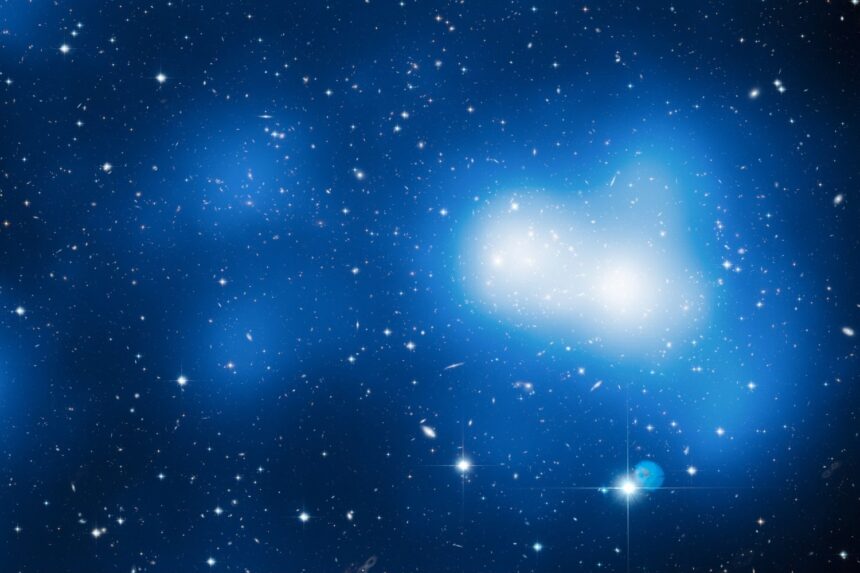If you thought the cosmic web was tangled enough, think again. A team of astrophysicists recently used gamma-ray bursts—those spectacular, enigmatic explosions of energy from the farthest reaches of the cosmos—to reveal that the largest-known structure in the universe may be even larger than previously thought.
The structure is the Hercules–Corona Borealis Great Wall, a filament of galaxy groups and clusters that spans about 10 billion light-years across. The structure’s new size estimate is causing fresh headaches for standard cosmological models, as it appears even larger than the previous high estimate of about 9.8 billion light-years.
In a new study—not yet peer-reviewed and hosted on the preprint server arXiv—a joint Hungarian-American research team led by István Horváth of Budapest’s University of Public Service scanned the sky for patterns. The team used a dataset of 542 gamma-ray bursts with known redshifts, essentially meaning their distances are known. The bursts are basically nature’s flashbangs—extremely luminous bursts of high-energy light capable of outshining entire galaxies for brief moments. These brilliant bursts are observable from great distances, making them ideal cosmic signposts. And when astronomers begin to notice them clustering into a single area of the sky, major questions begin to emerge.
The researchers tested a distribution of points across the universe to find that the great wall—originally discovered in 2014—might span a redshift range from z = 0.33 to z = 2.43. In other words: The structure stretches across a mind-bending amount of space and time. We’re talking billions of light-years. And no, this isn’t a pixel glitch or some weird telescope fluke—the authors ruled out statistical artifacts and sampling biases.
But according to the cosmological principle, the universe should be roughly homogeneous on large scales. The commonly accepted upper limit for such structures is about 370 megaparsecs (roughly 1.2 billion light-years), the paper stated. But Hercules-Corona Borealis Great Wall—so named for the constellations in the same region—is far beyond that. It makes the Sloan Great Wall and even the Giant Quasar Group look like dollhouses.
The Hercules-Corona Borealis superstructure isn’t just a patch of sky cluttered with gamma-ray bursts—it’s likely a dense region of galaxies, stars, and dark matter, held together by gravity. Furthermore, the brilliant gamma bursts could reveal structures invisible to other surveys; since these bursts are associated with massive stellar deaths, they might trace star formation in a way that galaxy surveys don’t.
If the team behind the new study is correct—that structures of this immense size can form in the universe—then the cosmological principle may be in need of a tune-up. Of course, it’s also possible that we’re missing something fundamental in our understanding of how the universe evolved. Frankly, it’s probably a bit of both.
So the next time you glance up at the stars and marvel at how small you feel—just remember, you’re even smaller than that—at least compared to a “wall” that nearly makes the scale of the cosmos itself mundane.
Read the full article here












